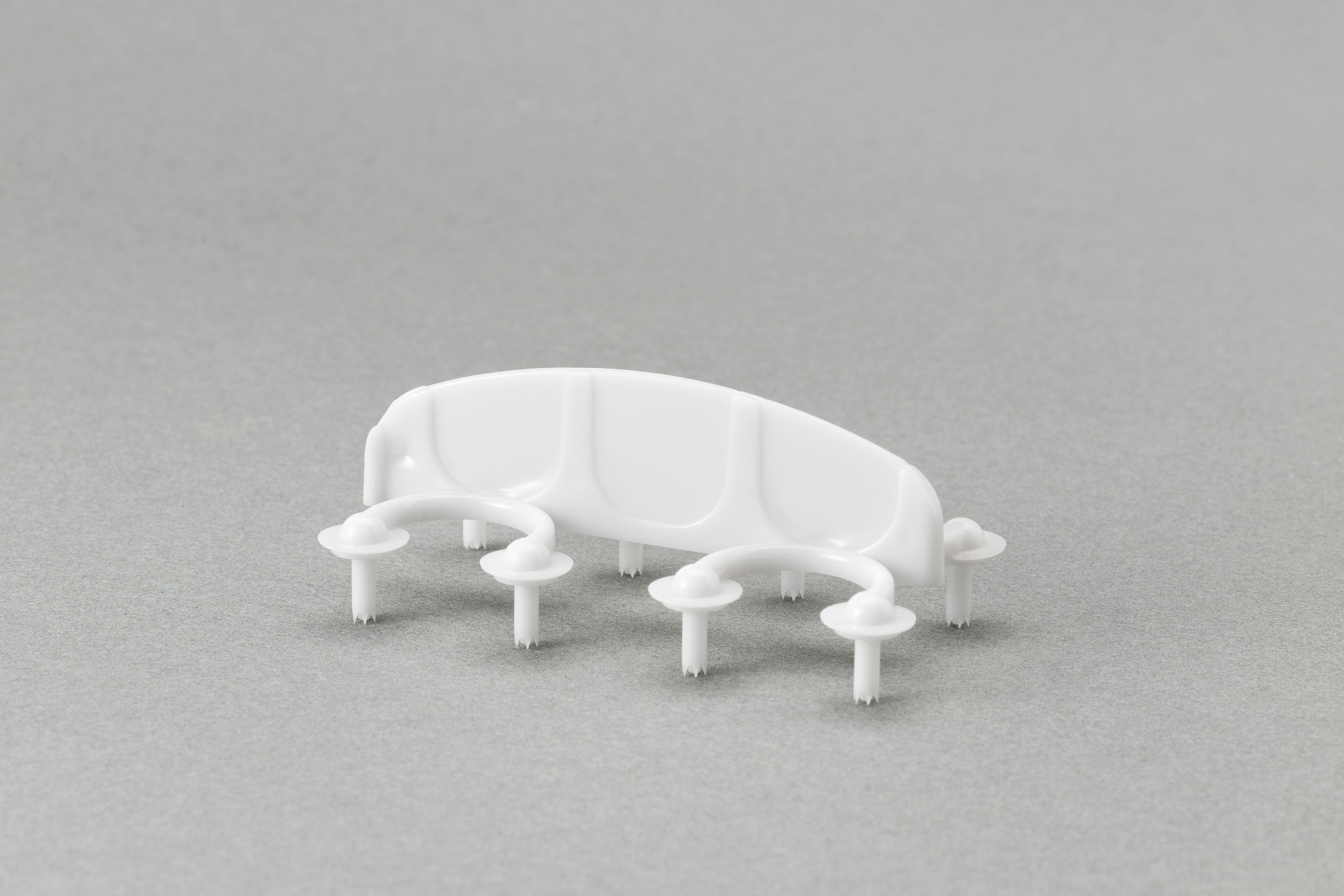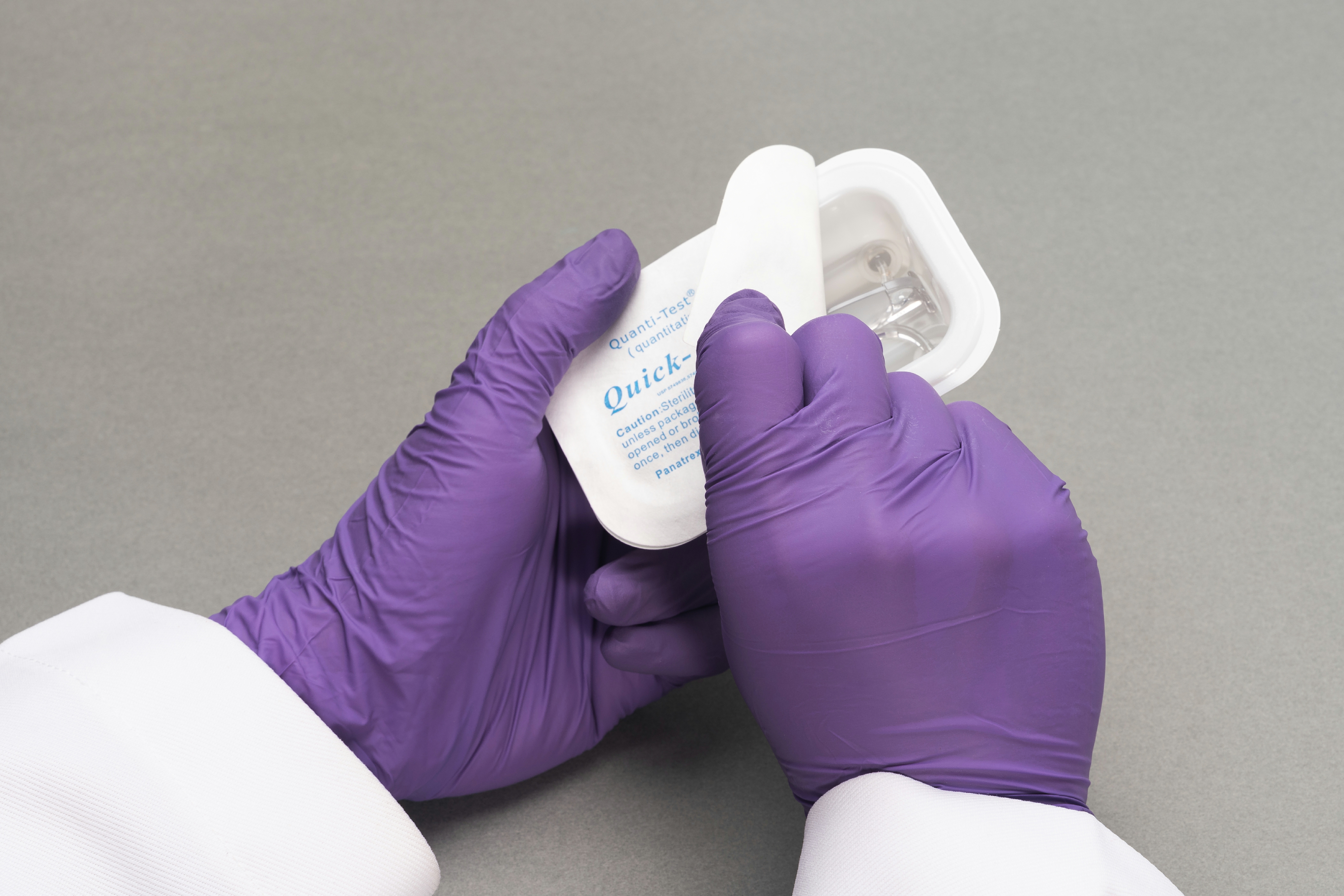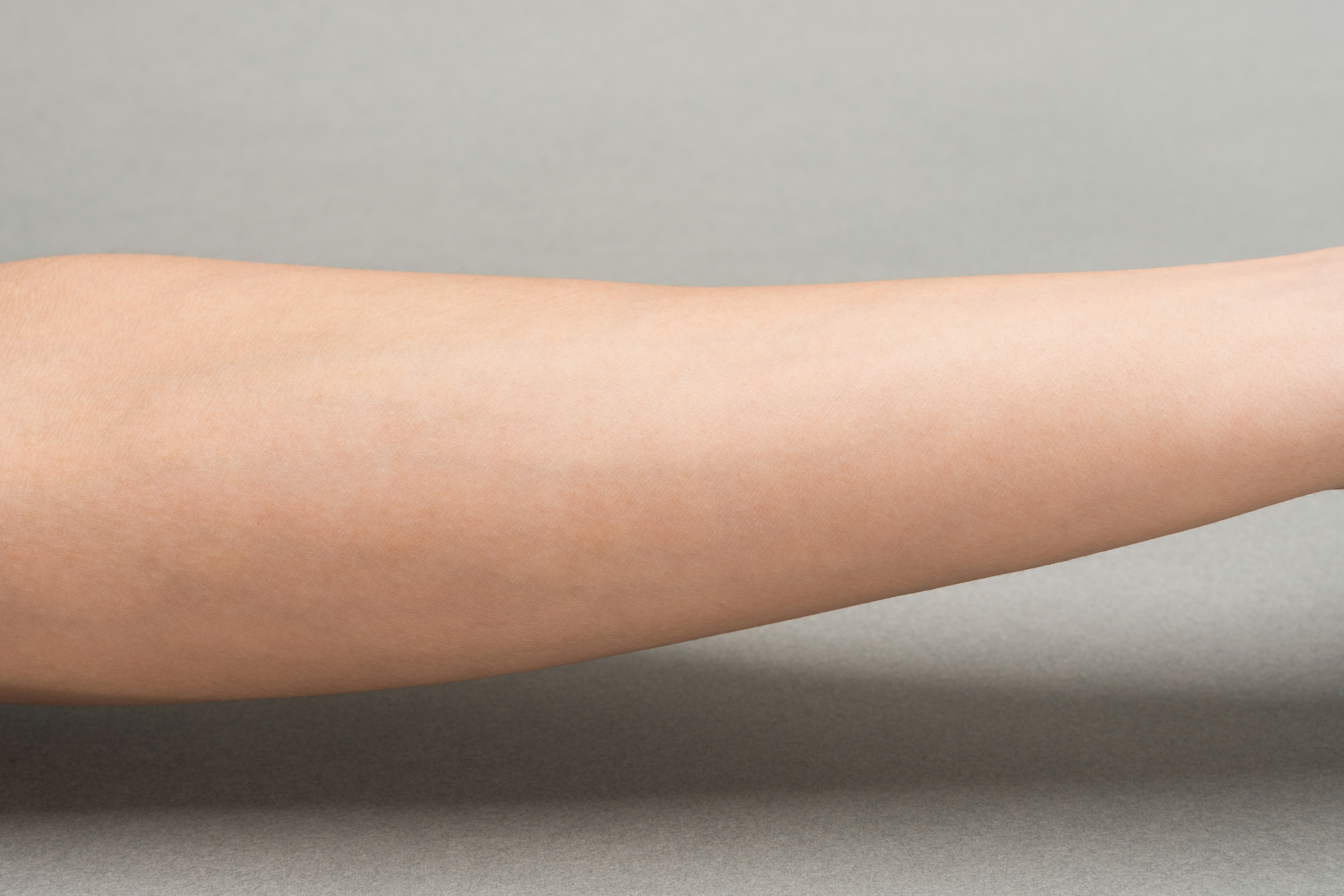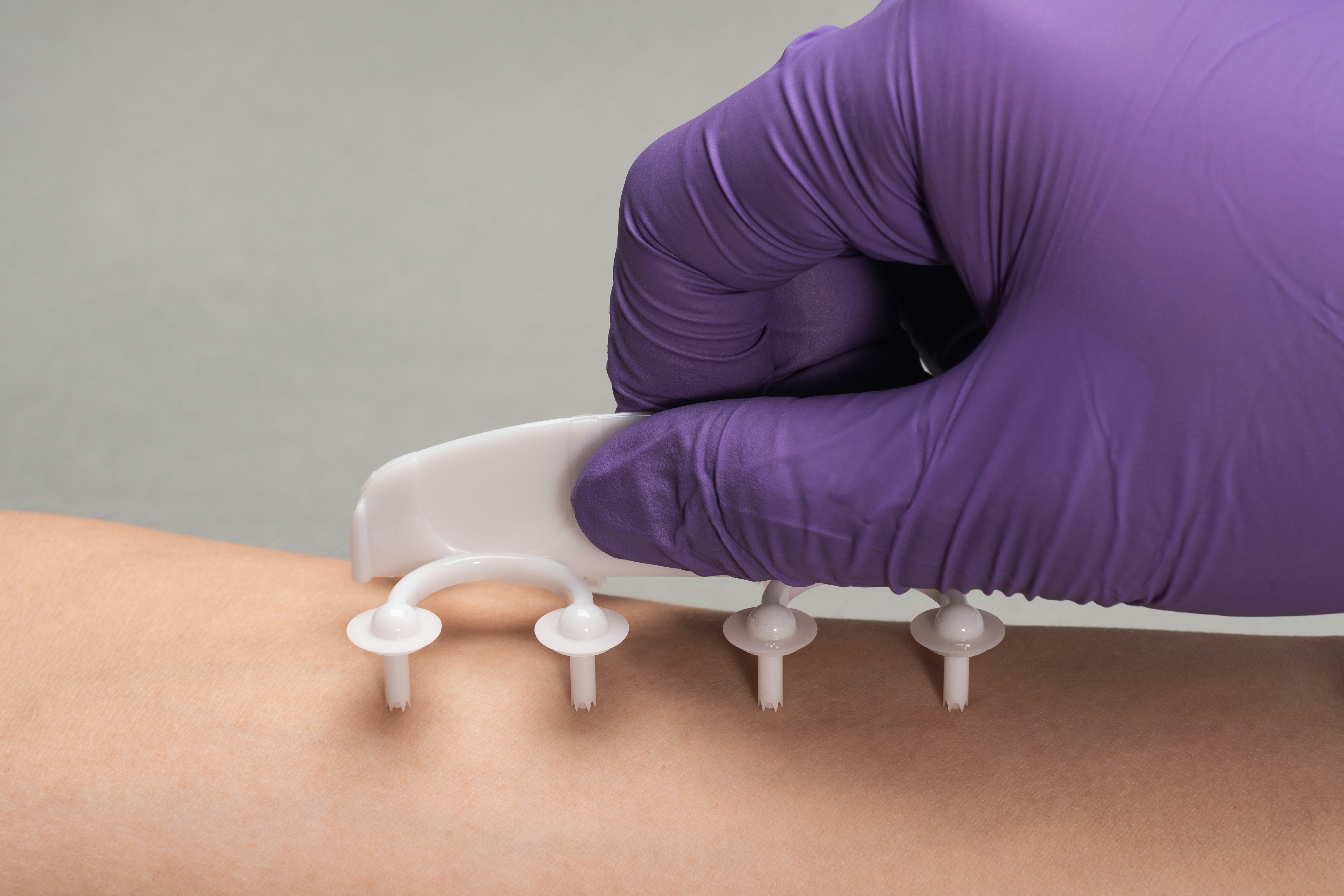The Quick-Test Applicator was designed with four elastic C-shaped arms, ending in a cap with one stem extending from each cap.
Multiple allergens are applied at the same time and all results are punctual.

Remove the applicator. To keep the allergens clean, please notice that the T end of the applicator must match the T mark on the Quanti-Tray. Please note that you must keep the caps on the wells fully shut to avoid allergen evaporation.

When placing the applicator into the Quanti-Tray, please place the two stems that are nearest to your chest into Quanti-Wells #8 and #4. After you gently slide them in, the other stems should follow.

Avoid allergen waste. While taking out the applicators, please lean the stems and tips against the circular plate wall of the Quanti-Wells.

Select a flat skin surface, such as the volar forearms or the back. Avoid areas with excessive hair growth and ensure that the area is large enough for the test.
Apply alcohol or other antiseptics to the test area to sterilize it, and wait until it is dry.

Place the quick test on the skin. Then, press the right row gently with applied pressure for 1–2 seconds, followed by the left row. Leave the allergens on the skin for at least one minute before wiping them off.

We highly recommend that our users use a positive control. Histamine was used as the control, and it usually requires 8 to 10 minutes before the allergic reaction. Furthermore, reactions with a specific IgE on mast cells need 15–20 minutes before reading.
A simple size comparison is one way to recognize the results. A positive reaction is also called erythema reaction, and it is usually 5 mm larger than a negative result. If a wheal reaction appears, it will be 2 mm larger than the negative control. Finally, if the reaction is larger or equal to the positive control result, it could be considered a strong reaction.
We also suggest that our users use a “+” system to indicate degree.
0+: Negative control or no reaction
1+: Borderline reaction as slightly more than negative control
2+: Substantial reaction
3+: Positive control
4+: Stronger than positive control
5+: Much stronger than positive control with a pseudopod reaction

